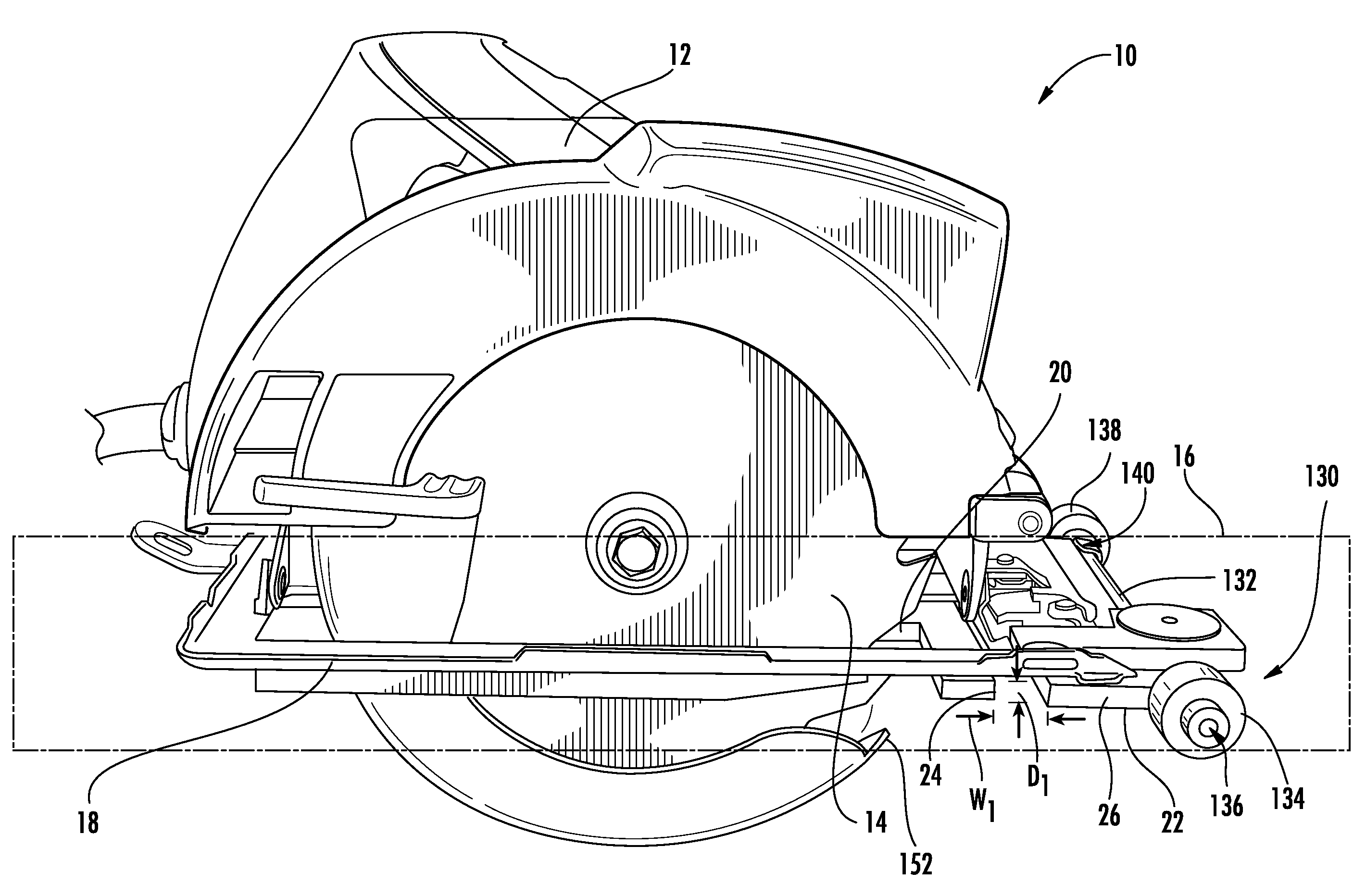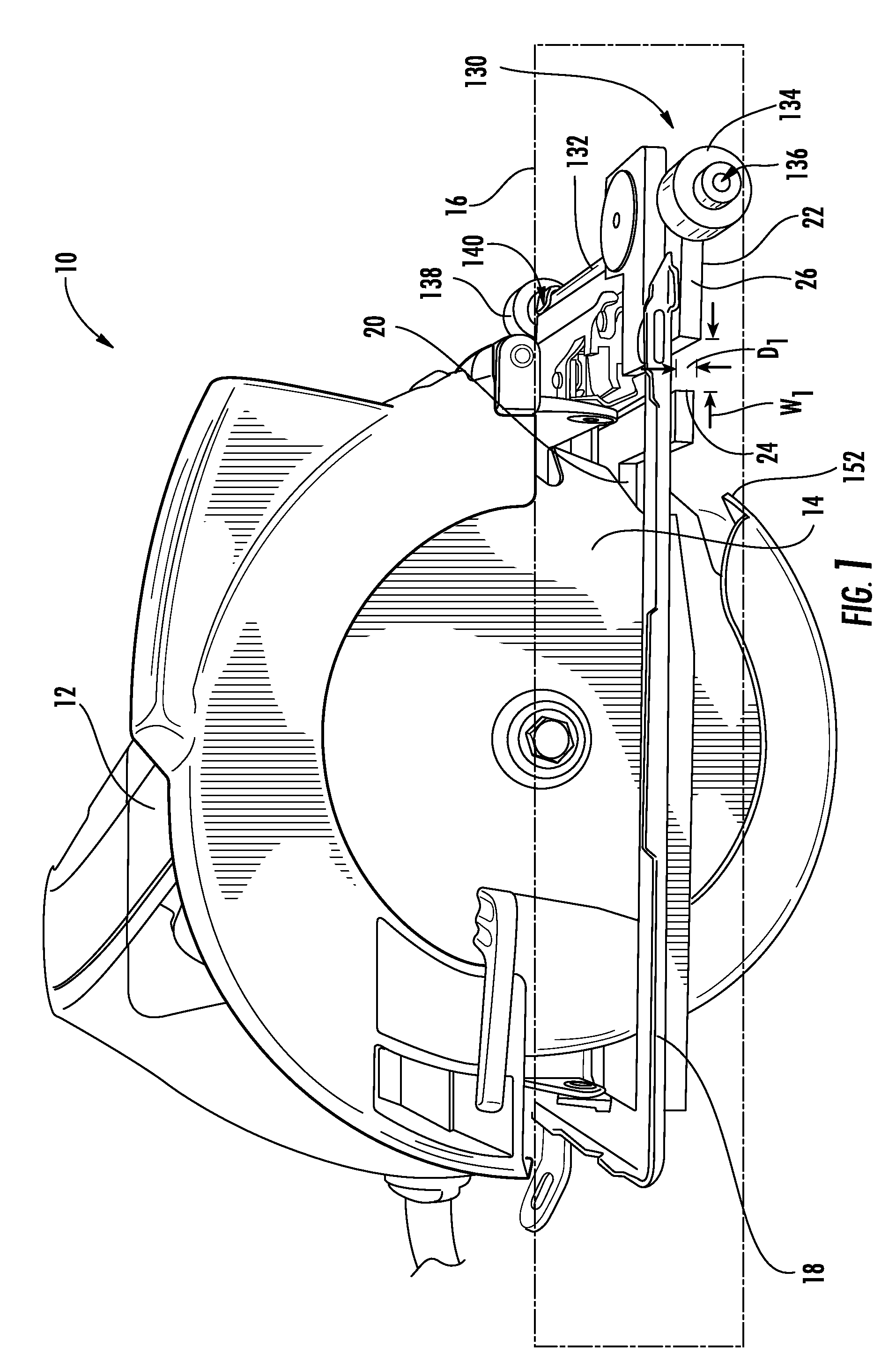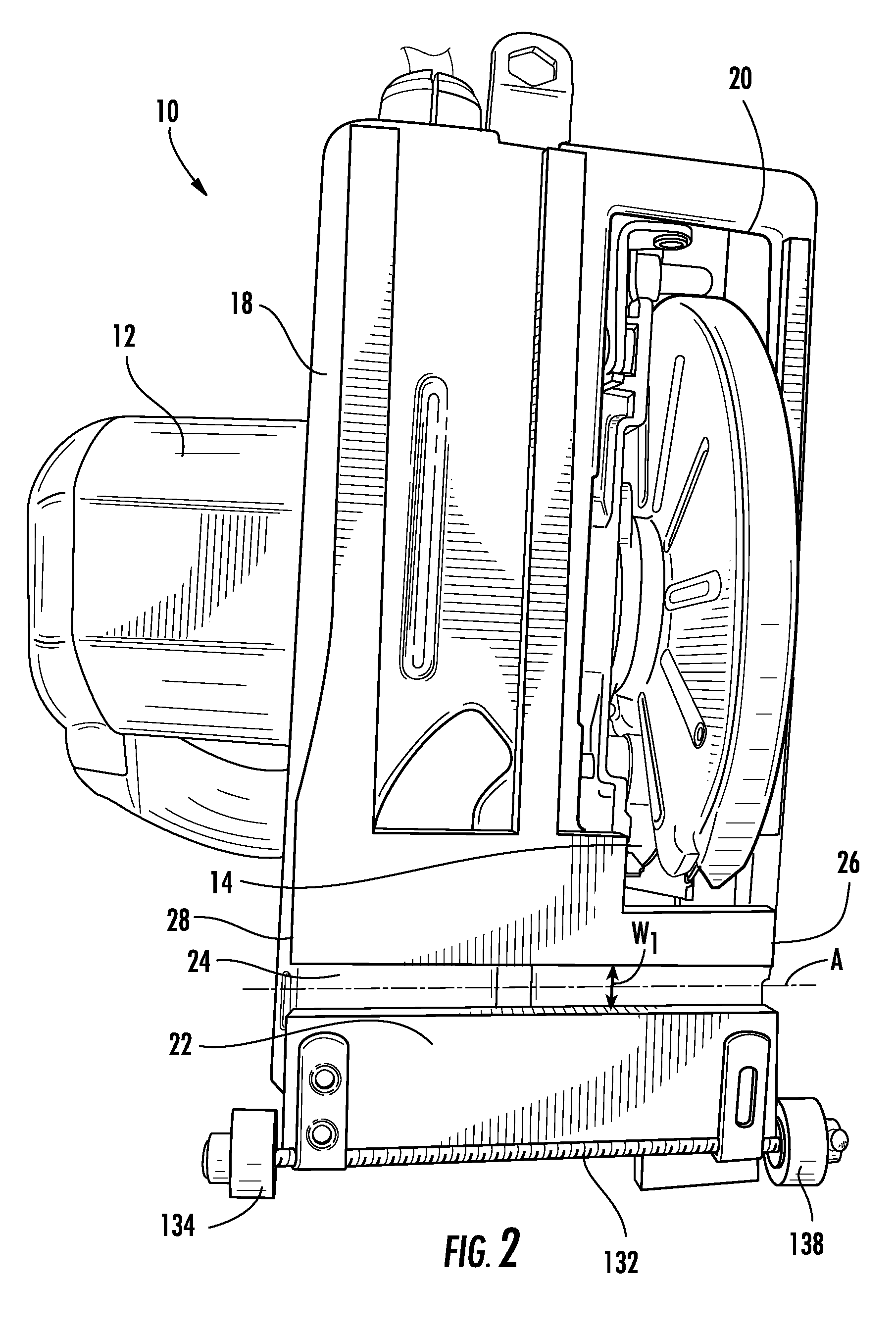Cutting aid for a motorized saw
a motorized saw and cutting aid technology, applied in the direction of metal sawing devices, metal sawing apparatuses, manufacturing tools, etc., can solve the problems of difficult to keep the cut moving in a straight line, inconvenient to use, and additional steps, so as to improve the building industry and quickly cut an object
- Summary
- Abstract
- Description
- Claims
- Application Information
AI Technical Summary
Benefits of technology
Problems solved by technology
Method used
Image
Examples
first embodiment
[0046]FIGS. 1-7 show a motorized saw 10 including a motor 12, a blade 14 defining a cutting plane 16, and a shoe 18 for holding the blade 14 of the motorized saw 10 in a predetermined relationship to an object to be cut. The motorized saw 10 in FIGS. 1-7 is illustrated as a rotary electric saw, but other types of motorized saws are contemplated by the disclosure. In the embodiment shown in FIGS. 1-7, the blade 14 is rotatably engaged with the motor 12 and removably attached adjacent thereto. The shoe 18 is attached adjacent the motor 12, the shoe 18 including an aperture 20 through which the blade 14 extends, a primary engagement surface 22 for engaging a surface of an object to be cut, and a first groove 24 interrupting the primary engagement surface 22.
[0047]The first groove 24 in the shoe 18 is oriented substantially orthogonal to the cutting plane 16 and extends from a first edge 26 of the shoe 18 to a second edge 28 of the shoe 18. The first groove 24 is configured for engaging...
second embodiment
[0049]FIGS. 9-10 show a motorized saw including a reciprocating motorized saw 30. The reciprocating motorized saw 30 further includes a motor (not shown) capable of producing a reciprocating motion, a blade 34 defining a cutting plane 36, and a shoe 38. The blade 34 is removably engaged with the motor and removably attached adjacent thereto. The shoe 38 is attached adjacent the motor, the shoe 38 including an aperture 40 through which the blade extends, a primary engagement surface 42 for engaging an object to be cut, and a first groove 44 interrupting the primary engagement surface 42.
[0050]The first groove 44 is oriented substantially orthogonal to the cutting plane 36 and extends from a first edge 46 of the shoe 38 to a second edge 48 of the shoe 38. The first groove 44 is configured for engaging an elongate surface or edge of an object to be cut by the motorized saw 30. After the first groove 44 is engaged with the elongate edge of the object to be cut, the motorized saw 30 may ...
fifth embodiment
[0058]a motorized rotary saw 102 shown in FIGS. 16-17 includes a protruding detent 104. The motorized saw 102 in FIGS. 16-17 does not include a fixed groove, however. Rather, the detent 104 extends outward from a bottom surface 106 of a shoe 108 to assist a user in initially aligning an elongate edge of an object to be cut at a desired angle relative to the cutting plane 16 of the blade 14. The detent 104 is oriented at an angle ranging from about 90 degrees to about 150 degrees relative to the cutting plane 16. The detent 104 is located near a first interface point 110 defined by the location at or near where the blade 14 and the object being cut initially make contact. In order to help balance the contact between the motorized saw 102 and an object being cut, the saw 102 further includes one or more shoe spacers 112. The detent 104 of the rotary saw 102 shown in FIGS. 16-17 is movable; however other embodiments may include a stationary detent(s).
[0059]In a related embodiment shown...
PUM
| Property | Measurement | Unit |
|---|---|---|
| depth | aaaaa | aaaaa |
| angle | aaaaa | aaaaa |
| angle | aaaaa | aaaaa |
Abstract
Description
Claims
Application Information
 Login to view more
Login to view more - R&D Engineer
- R&D Manager
- IP Professional
- Industry Leading Data Capabilities
- Powerful AI technology
- Patent DNA Extraction
Browse by: Latest US Patents, China's latest patents, Technical Efficacy Thesaurus, Application Domain, Technology Topic.
© 2024 PatSnap. All rights reserved.Legal|Privacy policy|Modern Slavery Act Transparency Statement|Sitemap



